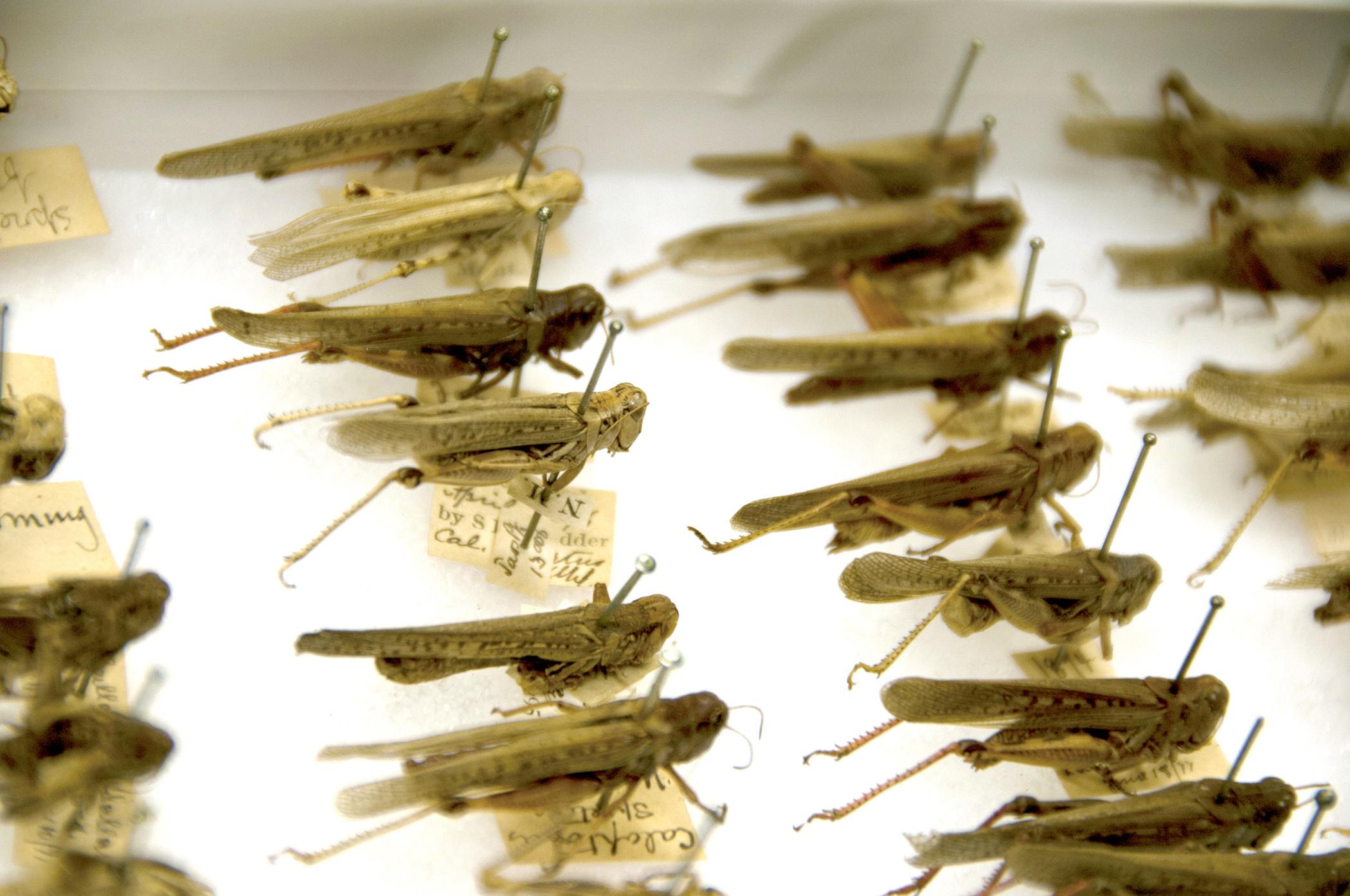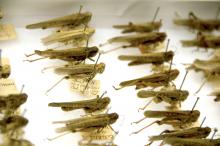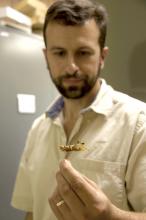Information Possibly Outdated
The information presented on this page was originally released on August 16, 2012. It may not be outdated, but please search our site for more current information. If you plan to quote or reference this information in a publication, please check with the Extension specialist or author before proceeding.
MSU borrowing U.S. grasshopper collection
MISSISSIPPI STATE – July brought 32,000 grasshoppers to Mississippi State University, but rather than being a plague of locusts, they are a research bonanza.
The Mississippi Entomological Museum is borrowing a portion of the grasshopper collection from the Smithsonian Institution’s National Museum of Natural History. JoVonn Hill, a research associate with the Mississippi Agricultural and Forestry Experiment Station, said the collection complements what MSU already has.
“This is a research collection the Smithsonian Institution kept off-site at the Museum Support Center,” Hill said.
Hill had worked with this collection in Washington, D.C., in the past, and when he learned no one was currently working with it, he asked it be loaned to MSU.
“I’ve been working with the grasshoppers of the Southeast for 10 years, collecting and studying the species, with the goal of writing a book about them,” Hill said. “There are at least 160 species of grasshoppers currently known to live in the Southeastern United States. I can gather a lot of historical and biological information from this collection to aid my research.”
Richard Brown, director of the Mississippi Entomological Museum, said the fact that the Smithsonian Institution entrusted their collection to the MSU museum is a credit to the university and the state.
“The Smithsonian did not have an active curator for this group of insects, and now it will be under the care of JoVonn Hill, who has gained respect as a leading researcher on grasshoppers in the United States,” Brown said.
In return for the use of the collection, which is the property of the U.S. National Museum, Hill will curate and add to it. Curating the collection involves keeping it up to date if names or species classifications are changed. Few grasshoppers have been added since the 1970s, so Hill will contribute to this collection when he gathers insects for the MSU collection.
Part of Hill’s work will involve dissecting specimens, many of which are 100 or more years old.
“Many grasshoppers are what are known as cryptic species,” Hill said. “You must look at the internal genitalia to determine what species it is.”
To do this, Hill soaks the dried specimens overnight in warm water, then dissects them. The insect is photographed and reassembled. Genitalia are placed in a vial that is pinned, along with the reassembled insect, in the display case.
“When you do this, you’re actually adding information to the specimen because you’ve made more of the specimen visible,” Hill said.
The grasshopper collection came to MSU in 150 drawers containing thousands of carefully pinned insects. These drawers are flat, nearly square airtight cases with glass tops, and they slide into collection cabinets. Insects are secured to boxes inside the drawers with straight pins pushed through their dried bodies. Small paper tags give collection, date and species information.
Since parts of the collection are more than a century old, many of the tags are handwritten. Newer tags are typed in a tiny, size 4 font. Many unknown species are included in the Smithsonian collection, and part of Hill’s work will be to identify these.
Brown said the combined grasshopper collections of MSU and the Smithsonian will provide a unique resource, as these insects are important to agriculture and the conservation of natural habitats.
“JoVonn will be called upon by other researchers in the United States and elsewhere to provide assistance with their research on grasshopper taxonomy and biology,” Brown said.
Information gained from insect collections is important in conservation efforts. The Smithsonian collection contains several specimens of the now-extinct Rocky Mountain grasshopper, which plagued early Midwestern pioneers. It was often called a locust, which Hill said is what a grasshopper population becomes when it reaches swarm numbers.
“The Rocky Mountain locust is the only extinct North American grasshopper species known,” Hill said. “Although it was devastating to settlers, it was a big part of the ecosystem, eating grasses and being eaten by birds. This collection has intact specimens and a few grasshoppers found frozen on top of a mountain in Montana.”
Brown said having this collection available for use will draw visiting researchers, especially as ongoing drought conditions increase national interest in grasshoppers.
“The Rocky Mountain grasshopper was historically important because it was a major reason for a Division of Entomology to be created in the U.S. Department of Agriculture,” Brown said.
While the bulk of the Smithsonian Institution’s collections stay in the U.S. capital, several collections are on renewable, five-year loans. In addition to the grasshoppers on loan to MSU, the Smithsonian collections of lightning bugs are in Florida, mantids are in Ohio and scarabs are in Nebraska.



